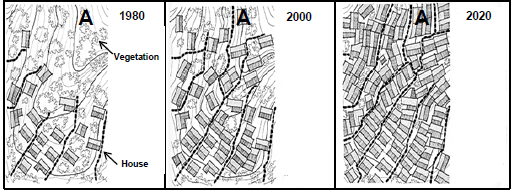GEOGRAPHY PAPER 1 ANNEXURE GRADE 12 - NSC PAST PAPERS AND MEMOS NOVEMBER 2016
Share via Whatsapp Join our WhatsApp Group Join our Telegram GroupGEOGRAPHY PAPER 1
NOVEMBER 2016 ANNEXURE
NATIONAL SENIOR CERTIFICATE
GRADE 12
FIGURE 1.1: MATURE STAGE OF DEVELOPMENT OF A TROPICAL CYCLONE
FIGURE 1.2: SECTION OF A RIVER
FIGURE 1.3: BERG WIND CONDITIONS
FIGURE 1.4: MID-LATITUDE CYCLONE
FIGURE 1.5: DRAINAGE BASINS
FIGURE 1.6: RIVER GRADE AND LONGITUDINAL PROFILES OF A RIVER
FIGURE 2.1: CITY CLIMATES
FIGURE 2.2: TYPES OF RIVERS
FIGURE 2.3: A VALLEY IN THE SOUTHERN HEMISPHERE (30°S)
FIGURE 2.4: SYNOPTIC WEATHER MAP

FIGURE 2.5: DRAINAGE PATTERNS
FIGURE 2.6: RIVER CHANNEL
FIGURE 3.1: URBAN CHARACTERISTICS
FIGURE 3.3: TYPES OF RURAL SETTLEMENTS
FIGURE 3.4: AN INFORMAL SETTLEMENT IN INDIA
FIGURE 3.5: MINING IN SOUTH AFRICA
RENEWAL OF THE SA MINING INDUSTRY Friday 11 September 2015, 18:21 |
FIGURE 3.6: INFORMAL TRADING IN SOUTH AFRICA
METRORAIL BURNS DOWN HAWKERS' STALLS Nombulelo Damba/WCN A hawker determinedly sets up her sweets stand amid the burnt-out remains of hawkers' stalls that were set alight at Khayelitsha Station by Metrorail security guards. |
FIGURE 4.3: URBAN EXPANSION
FIGURE 4.4: URBAN SPRAWL
FIGURE 4.5: AGRICULTURAL PRODUCTION

